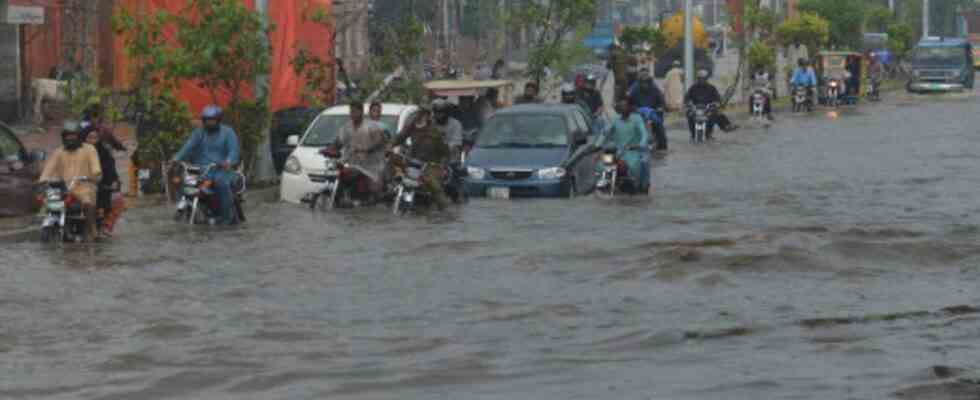Tens of millions of Pakistanis on Tuesday continue to battle the worst monsoon rains in three decades, which have claimed at least 1,136 lives, washed away countless homes and destroyed vital farmland. 20 minutes takes stock of this extreme climatic episode, a “crisis of unimaginable proportions” unprecedented for thirty years.
What’s going on in Pakistan?
A third of Pakistan is currently “under water,” Climate Change Minister Sherry Rehman said Monday in an interview with AFP. The monsoon rains, which began in June, are “unprecedented for thirty years”, underlined Prime Minister Shehbaz Sharif, while traveling through the affected regions of the North. In the south, the country’s main river, the Indus, threatens to burst its banks.
Pakistani officials attribute the devastating weather to climate change, saying their country is suffering the consequences of irresponsible environmental practices elsewhere in the world. Antonio Guterres, the UN Secretary General, also placed the natural disaster in the broader context of climate change: “South Asia is one of the hotspots of the global climate crisis. People living in these hotspots are 15 times more likely to die from climate impacts. »
“It’s all just one big ocean, there’s no dry place to pump the water from,” Sherry Rehman said on Tuesday. According to her, these bad weather are even worse than those of 2010, the year during which 2,000 people were killed and almost a fifth of Pakistan submerged by the monsoon rains. Pakistan has indeed received twice as much rainfall as usual, according to the meteorological service. In the southern provinces (Baluchistan and Sind), the most affected, the rains were more than four times higher than the average of the last thirty years.
What is the human toll of these floods?
More than 33 million people, or one in seven Pakistanis, are already affected by the floods. According to the latest report on Monday from the National Disaster Management Authority (NDMA), the monsoon has claimed at least 1,136 lives since it began in June, including 75 in the past twenty-four hours. But the authorities are still trying to reach isolated villages located in northern mountainous areas, which could further increase the toll.
International aid is slowly starting to arrive. The water is hampering relief operations under the supervision of the Pakistani army. Authorities and humanitarian organizations are finding it difficult to expedite their delivery. As for the people displaced by the floods, they have found refuge in makeshift camps hastily established throughout Pakistani territory.
What is the material toll of these floods?
Nearly one million homes have already been destroyed or severely damaged, the government said. The NDMA said more than 80,000 hectares of farmland had been ravaged and more than 3,400 kilometers of roads and 157 bridges washed away. According to the World Health Organization (WHO), 180 health facilities “have been totally damaged” and the organization warns of the health dangers inherent in the floods, which go far beyond the risk of drowning, in particular water unfit for consumption, but also the danger of electrocution.
What will be the economic cost of these devastating floods?
These floods come at the worst time for Pakistan, whose economy was already in crisis. The United Nations and the Pakistani government, which has declared a state of emergency, officially launched an appeal on Tuesday for donations of 160 million dollars to finance emergency aid. The International Monetary Fund gave its agreement on Monday to the resumption of a financial support program, essential for the country, and announced the release of an envelope of 1.1 billion dollars.
But it is already clear that Pakistan will need much more to rebuild, more than $10 billion. This is the figure advanced on Tuesday by the Minister of Planning and Development. The United Nations aid will, for its part, finance an emergency plan for the next six months, in order to provide first and foremost basic services (health, food, drinking water and shelter), explained Jens Laerke the spokesman for the Office of Humanitarian Affairs of the United Nations (Ocha). The aid must also make it possible to avoid epidemics of cholera, for example, and provide food aid to mothers and their young children.
UNHCR, the UN agency for refugees – who number in the millions in Pakistan – said it had already distributed aid in refugee camps and host communities to the tune of 1.5 million dollars including shelter, food, kitchen utensils but also sandbags to protect homes.

